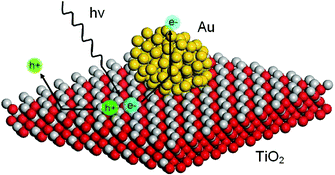Low energy photosynthesis of gold-titania catalysts
Abstract
By identifying the Electron Partitioning Effect (EPE) as responsible for the large gold deposits usually formed in the conventional photodeposition method, a low energy UV light-based method for the preparation of comparatively high-activity gold-titania


 Please wait while we load your content...
Please wait while we load your content...